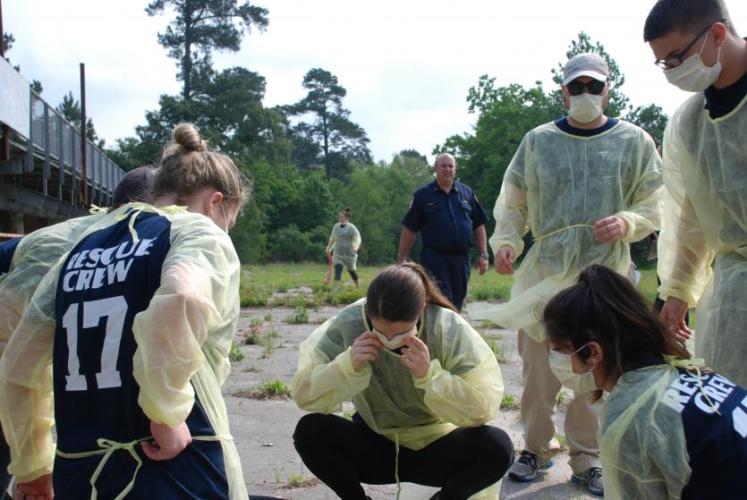NACOGDOCHES, Texas - Seniors pursuing a Bachelor of Science in Nursing in Stephen F. Austin State University's Richard and Lucille DeWitt School of Nursing recently held a disaster drill in conjunction with local emergency personnel to help better prepare in the event of a crisis.
Participants acted out two scenarios - an active shooter and a bomb scenario. During each scenario, nursing students played the role of patients while fellow nursing students served as nurses. Several Nacogdoches Fire Department trainees also assisted with additional employees from community organizations and agencies also working alongside.
Each fall and spring semester, the School of Nursing conducts a disaster day, organized by a student committee under the supervision of School of Nursing faculty members. The simulation helps condition nursing students to the hectic work environment of nurses, forces them to solve problems and communicate on the fly, tests their critical thinking skills and assessment and triage abilities.
"We work closely with school faculty, the Nacogdoches Police and Fire Departments, Nacogdoches Medical Center and Nacogdoches Memorial Hospital, Nacogdoches EMS, and the district attorney to come up with details for the simulation," Jenelle Samaroo, SFA senior nursing major from Houston, said.
Drills began with a truck serving as the mobile command center where nursing students organized into quadrants and donned protective gear. Members of each nursing quadrant triaged patients using information on a card that each patient wore around his/her neck.
Student nurses dropped triage cards beside each patient that detailed their assessed condition - green for minor injuries, yellow for more serious conditions, red for immediate attention required and black for those whose condition was beyond the help of onsite medical personnel.
The NFD trainees accompanied the student nurses and, literally, helped with the heavy lifting. They assisted in putting patients onto backboards and carrying them to color-coordinated tarps that matched the patient's triage cards and served as treatment areas.
Samaroo and Devin Assenheimer, a Longview nursing senior who helped organize the bomb scenario drill, watched as a handful of student nurses approached a patient covered in flour. "The flour is meant to represent anthrax," Assenheimer said. "We didn't tell the student nurses about that beforehand. We wanted to see if they took proper precautions."
At day's end, participants practiced addressing the media and speaking during a mock press conference.
"We've been doing these disaster simulations for a number of years," Dr. Janice Hensarling, assistant professor in SFA's School of Nursing, said. "It's a great opportunity to engage with local emergency service agencies and introduce our students to the pressures that an emergency situation can generate. It also teaches them the importance of clear and effective communication, leadership and teamwork."

 Axe ’Em, Jacks!
Axe ’Em, Jacks!